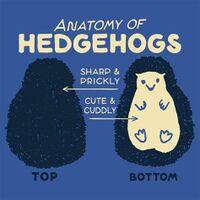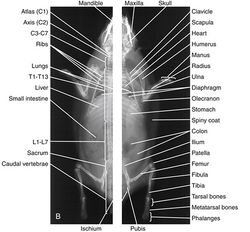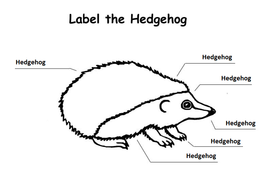Half-hedgehoglessness
“That which cannot be held cannot be real; that which cannot be a half-hedgehog cannot be held.”
Half-hedgehoglessness is a state in which an entity does not possess another entity that is a half of a hedgehog. Paracelsus' famous work Algebra Mammalia, which dealt solely with the Mathematics of rodents and other small mammals, proved with his Half-hedgehoglessness Conjecture that this state is omniapplicable, by considering four basic cases.
Case 1: Total Half-hedgehoglessness
The entity possesses no entity which is part or whole of a hedgehog. In this case, half-hedgehoglessness is achieved by virtue of hedgehoglessness, though the two states are not self-proving.
This is commonly referred to as total half-hedgehoglessness and is identical in execution to the lessness of any mammal.
Case 2: Whole Hog Half-hedgehoglessness
The entity possesses an entity which is commonly accepted as a whole hedgehog. In this case, half-hedgehoglessness is achieved because the hedgehog itself is virtually indivisible: any division of the hedgehog prevents the possibility of creating a perfect half-hedgehog; thus, though a whole hedgehog is in its most basic sense composed of two half-hedgehogs, these halfhogs cannot be separated and therefore cannot be identified as individual entities. This is commonly referred to as whole hog half-hedgehoglessness and is identical in execution to hedgehogfulness.
Case 3: Half-Hog Half-hedgehoglessness
The entity possesses a single entity which is commonly accepted as a half-hedgehog. The concept that a half-hedgehog exists constitutes the proof that it has another half-hedgehog counterpart; that is, a single half-hedgehog cannot exist unless another does. In this case, the half-hedgehog that the entity is without is the half-hedgehog which corresponds to the other half-hog in its possession. This is commonly referred to as half-hog half-hedgehoglessness and is unique.
Also known as Semi-halfhedgehoglessness & Quarterhedgehoglessness - this theory has long been disputed by the International Union of Philosophical Logicians, not due to any inherent logical paradox, but due to its pointlessness, halfpoinlessness, and semi-halfpointlessness.
Case 4: Dual Half-Hog Half-hedgehoglessness
The entity possesses two entities which are commonly accepted as half-hedgehogs. The case would seem to be self-denying: half-hedgehogfulness cannot prove half-hedgehoglessness. However, the proof has been defined since the 300s BC: First, any division of a whole hedgehog prevents the possibility of creating a perfect half-hedgehog; thus, though a whole hedgehog is in its most basic sense composed of two half-hedgehogs, these halfhogs cannot be separated and therefore cannot be identified as individual entities. Therefore, though the half-hogs in possession must exist, they cannot have been extracted from the whole hog by any normal physical means and therefore cannot be recombined to form a single whole hog.
Because a half-hedgehog is defined as that which constitutes or may constitute one half of the physical form of a half-hedgehog, the two half-hogs in possession do not exist in a mathematical sense. This is commonly referred to as dual half-hog half-hedgehoglessness and is half-hog half-hedgehoglessness added to itself once.
This is not a case of summative half-hedgehogidity.
Related theories
Paracelsus' Original Lessness Theories:
- If an entity is in possession of no entity or part of an entity, that entity cannot possess a hedgehog, badger, rabbit, weasel, ferret, skunk, field-mouse, porcupine, or half of any of these mammals.
- If an entity possesses part of an entity but not a whole entity, that entity cannot possess a hedgehog, badger, rabbit, weasel, ferret, skunk, field-mouse, or porcupine.
- If an entity possesses two whole entities, they can be any combination of two of the following: hedgehog, badger, rabbit, weasel, ferret, skunk, field-mouse, or porcupine, but not two porcupines.
- If an entity possesses non-existence, it can be determined to not be an entity, kind of like Tobago.
See also
- Hemisemihalfhedgehoglessness -The state of not possessing of another entity that is a 12.5% of a hedgehog. Sometimes referred to as Halfquarterhedgehoglessness
- Hemidemisemihalfhedgehoglessness - The state of not possessing of another entity that is a 6.25% of a hedgehog. Sometimes referred to as Semihalfquarterhedgehoglessness
- Subhemidemisemihalfhedgehoglessness - The state of not possessing of another entity that is a 3.125% of a hedgehog. Sometimes referred to as Hemisemihalfquarterhedgehoglessness
| Featured version: 22 June 2021 | |
| This article has been featured on the main page. — You can vote for or nominate your favourite articles at Uncyclopedia:VFH. | |








